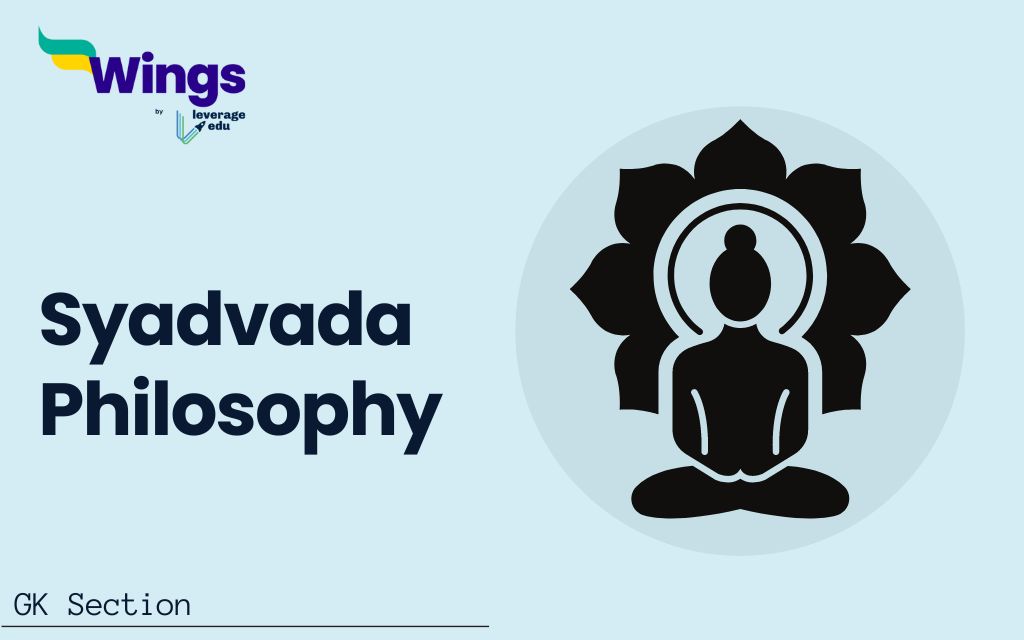Syadvada is a Jain philosophy that believes in multiple aspects of the truth. According to this theory, everyone’s point of view is limited or partial, and only multiple perspectives may help you better understand the situation. Syadvada, commonly known as the doctrine of relativity of judgement, is closely related to the Anekantavada philosophy. In this blog, we will study the theory of Jainism, Syadvada, which will help you understand Jainism’s philosophies. It may also appear on the syllabus of competitive examinations such as the UPSC.
Contents
What is Syadvada Philosophy?
Syadvada is a significant Jain philosophy that emerged in ancient India. This philosophy emphasises nonviolence, empathy, non-possessiveness, and different perspectives. The name Syadvada is derived from two Sanskrit words: Syat (meaning “perhaps”) and Vada (meaning “doctrine”). It is also known as the theory of relativity and various views.
- Syadvada is profoundly founded in the teachings of Mahavira, the 24th Tirthankara of Jainism, who existed in the 6th century BCE.
- Mahavira highlighted the complex nature of reality and the limitations of human knowledge.
- Further Jain academics, such as Kundakunda and Haribhadra, expanded upon the concept of Syadvada.
Core Principles of Syadvada Philosophy
Syadvada follows certain principles that form the foundation of this theory. The main principle of Syadvada is that there is no statement that can be used to explain the truth, and it only represents just a part of the entire truth. This method encourages intellect, tolerance, and respect for different points of view.
Syadvada sticks to the seven-step process of analysis, also known as sevenfold prediction or Saptabhangi. These are the seven alternative ways to convey the complex truth. These seven predictions are mentioned below.
- Syad-asti (In some ways, it is): It accepts the existence of a concept under certain conditions.
- Syad-nasti (In some ways, it is not): It denies the existence of a concept under a certain condition.
- Syad-asti-nasti (In some ways, it is and it is not): IT acknowledges the coexistence of a concept under different conditions.
- Syad-asti-avaktavyam (in some ways, it is, and it is indescribable): It accepts the presence of a concept while acknowledging that it cannot be fully described.
- Syad-nasti-avaktavyam (in some ways, it is not, and it is indescribable): It denies the presence of a concept while acknowledging that it cannot be fully described.
- Syad-asti-nasti-avaktavyam (in some ways, it is, it is not, and it is indescribable): It accepts and denies the complexity of reality while acknowledging that it cannot be fully described.
- Syad-avaktavyam (in some ways, it is indescribable): It describes the limitations of language and human intellect to fully capture the reality of truth.
Also Read: Jainism Philosophy UPSC: Philosophy and Literature
Relevance of Syadvada Philosophy
Syadvada promotes the coexistence of thoughts and follows the motto ‘Live and Let Live’. In today’s world, the Syadvada philosophy brings harmony and balance to our lives.
- According to this philosophy, truth can be changed at any time based on situations.
- Some people view this idea from a single standpoint, which can result in chaos and confusion.
- This philosophy is based on the statements of Acharya Pujyapada Swami, who stated that “substances are characterised by an infinite number of attributes. We stress a single characteristic of a material while ignoring the others based on our needs.”
- Syadvada serves as a means of resolving disagreements.
Challenges of Syadvada Philosophy
One of the biggest challenges that this philosophy faces is the misinterpretation of its statements. Some individuals ignorant of Jain philosophy observe ‘Syat’ as the third person.
- Some writers translate this philosophy as having no understanding of true reality, whereas Syadvada provides an exact and clear representation of reality.
- Syadvada should not be misunderstood as a philosophy with indefinite aspects. It is a statement that clears any confusion and provides the ‘right perspective on truth’.
- Everyone assumes that what exists cannot be non-existent, yet this is only partially accurate because conditions change all the time.
Syadvada is an important Jain philosophy that teaches you the nature of reality in seven ways, also known as Saptabhangi. Despite challenges and criticism, Syadvada is still an important and relevant approach in today’s diverse and interconnected society.
Related Posts
| Jain Councils: History, List and Reasons | Nyaya Philosophy: Doctrine and Principles |
| Shramana Tradition: Origin and Elements | Samkhya Philosophy: Doctrine and Principles |
| Digambara Jain: Origin & Sub-Sects | Chaityas And Viharas: Features and Significance |
| How to Prepare History for UPSC? | Saint Nimbarka: Life, Philosophy and Work |
FAQs
Syadvada is a significant Jain philosophy that emerged in ancient India. This philosophy emphasises nonviolence, empathy, non-possessiveness, and different perspectives.
Syadvada is a way of life whereas anekantavada is a philosophy. Syadavada is a part of Anekatavada, therefore they both use the same concept of multiple viewpoints to understand the nature of reality.
Bhadrabahu’s writings contain the earliest mention of Syadavad. Samantabhadra provides a general overview of the seven sections of Syabvada, also known as Saptabhangi.
This was all about the “Syadvada Philosophy”. For more such informative blogs, check out our UPSC Exams Section and Study Material Section, or you can learn more about us by visiting our Indian exams page
 One app for all your study abroad needs
One app for all your study abroad needs














